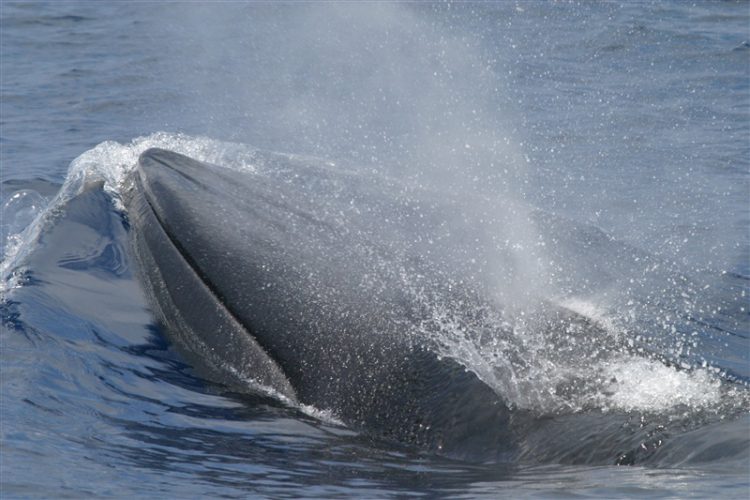With the Gulf of Mexico Bryde’s whale designated as an endangered species in April 2019, it is more important than ever to learn about the whale’s critical habitat as a first step in planning for its recovery. This is where lead investigator, Dr. Lance Garrison, and the NOAA RESTORE Science Program come into play with a project begun in 2017 focused on understanding what the Gulf of Mexico Bryde’s whale eats and where it lives. So far, Dr. Garrison and his team have conducted two research cruises dedicated to learning about the whale and will embark on a third cruise in May 2019. By working closely with the people responsible for marine mammal management in the Gulf of Mexico, Dr. Garrison and his team are ensuring their discoveries about the whale’s feeding and movement are integrated into recovery plans.

The endangered species listing for the Gulf of Mexico Bryde’s (pronounced “BROODUS”) whale cited its small population size (estimated at 33 individuals) and restricted range combined with threats posed by energy exploration and production, oil spills and oil spill responses, vessel collisions, fishing gear entanglement, and anthropogenic noise. However, it is not known why they are in a restricted area and what the features are of their critical habitat. Gulf of Mexico Bryde’s whales are reliably found in the DeSoto Canyon off the western coast of Florida, one of the quietest areas in the Gulf of Mexico. Seismic activity is much less here than in other parts of the Gulf of Mexico, and oil and gas companies have made an agreement to not conduct seismic surveys in the DeSoto Canyon until at least 2022.
Dr. Garrison’s RESTORE Science Program project works regularly with resource managers to ensure that their findings can be applied directly to the recovery of the Gulf of Mexico Bryde’s whale. He hopes this last cruise will provide more details on the whale’s feeding habits. The whales spend most of their daylight hours diving, feeding, and coming up on an eight minute cycle; and then stay at the surface most of the night. This constant daylight diving has investigators wondering what the whale’s energy requirements are and whether they are being met by the resources and prey available. Learning about their habitat and feeding processes provides information for resource managers to designate critical habitat, then develop and implement a recovery plan across the Gulf of Mexico.
As the only baleen whale living year-round in the Gulf of Mexico, Gulf of Mexico Bryde’s whales play an important role in the ecosystem. Recent research points to whales as transporters of microorganisms from lower to higher ocean depths. Additionally, whale urine and excrement release important nutrients that act as fertilizers on the surface, and whale falls (when a whale dies and sinks) produce organic-rich and sulfide-rich habitats that nourish scavenger ecosystems on the ocean floor. The Gulf of Mexico Bryde’s whales play these roles in the DeSoto Canyon, and if recovery efforts are successful, will continue to do so in the future.
Learn more by visiting project page on NOAA RESTORE Science Program website
Written by Kassie Ernst
 Official websites use.gov
A .gov website belongs to an official government organization in the United States.
Official websites use.gov
A .gov website belongs to an official government organization in the United States.
 Secure .gov websites use HTTPS
A lock or https:// means you’ve safely connected to the .gov website. Share sensitive information only on official, secure websites.
Secure .gov websites use HTTPS
A lock or https:// means you’ve safely connected to the .gov website. Share sensitive information only on official, secure websites.